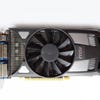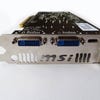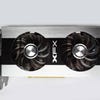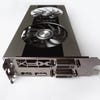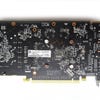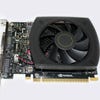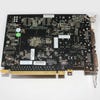The Digital Foundry budget graphics card upgrade guide
How much performance can be extracted from ?80-?130 graphics hardware? And are there any second-hand bargains?
It's been six months since we reviewed AMD's Radeon HD 6870, priced then at £100, where we were shocked to find that you don't need to break the bank to achieve the coveted 1080p at 60 frames per second for most games. Anchored by game designs based on current-gen console capabilities, we found that it's possible to radically improve upon the Xbox 360 and PS3 game experience with relatively inexpensive PC graphics hardware. So the question is, with a new wave of budget cards upon us, what can we expect from them in terms of price vs. performance, and how do these cards stand up to the most popular cards from the last GPU generation?
For those looking for a cheap GPU upgrade, no time is better than the present. There are now a slew of viable options around the £100 mark that can play the heavy-hitters of yesteryear - from Battlefield 3 to Crysis 2 - at settings which fall closer to our expectations of the next console generation than the current. To round-up the best offerings at the time of writing, we thought we'd test Nvidia's GTX 650 and AMD's Radeon HD 7770 to see how performance fares for those on a budget of around £70-100. For gamers with a slightly more generous budget, we also take a look at each firm's higher-end offerings, with the GTX 650 Ti and HD 7850 accounting for the £100-130 range.
Of course, the cheaper end of the GPU spectrum is traditionally an area where AMD dominate once the performance-per-pound stakes are tallied up and even recent deals are showing that its cards can go lower than £70 if you can snag a good sale, but the level of rendering power available for less than £130 is quite phenomenal - as we'll see later on. Nevertheless, with gradual down-sizing of Nvidia's Kepler GPUs over the course of 2012, the eternal question remains: which cards offer the best combination of price and performance?
But there's more to a card than pure technical flair. When it comes to heat emissions, power consumption, and physical presence, the GTX 650 Ti has most cards in this category beat. The contrasts with previous 40nm-based generations are especially striking. We record a TDP of 10 watts while idling on desktop with the card, which shoots up to 95 at the peak of action during graphics tests in 3DMark 11. The older GTX 460, meanwhile, throws out 20 watts and 160 watts in these respective tests, while the 6870 gives us 15 watts while idling and a maximum of 155 watts during the first benchmark. This is also reflected in the heat output for the GTX 650 Ti, which we record at just 24 degrees Celsius while web-browsing, and no higher than 55 degrees under extensive load.
Inevitably, the readings on our lower-end cards prove more impressive from a power-efficiency standpoint. At the highest stable count during testing, we record 85 watts from the 7770, and a paltry 65 watts from our GTX 650. Die size factors in here, with the latter card packing the fewest transistors - at approximately1300 million - onto a minuscule 118mm2 die. Nevertheless, the award for shortest card still goes to the Ti version in its reference form, which stretches out to just 15.5 centimetres, and only occupies a single slot when installed in the PC.
Performance analysis: synthetic benchmarks
With the technical ground covered, we can jump straight into the tests. The new releases under the lens are the GTX 650, GTX 650 Ti, HD 7770, and HD 7850 - but to put their progress intro perspective we've also added latter-generation cards into the mix, including the HD 6770, HD 6870 and GTX 460.
To start with the lower £70-100 bracket first, it's surprising to see the lack of a colossal improvement for the 7770 branded card over its spiritual precursor, the 6770. Strangely, the Pitcairn card's bump in core clock goes to little use during the Metro 2033 benchmark, which we run at very high quality settings in DirectX 11 mode, 1080p, with tessellation and DOF enabled. The improvement amounts to no more than 1FPS on average during three passes across the war-torn caves, where we see dynamic lighting, multiple NPCs, and physics properties on exploding debris and flapping fabric.
We've also included the enthusiasts' favourites of the past in this comparison - the GeForce GTX 460 and the Radeon HD 6870. As you can see, the old 460 only offers modest improvements over the new 650, but just as we found the 6870 to be stunning value brand new at £100, at its current used price of around £80-£85, it represents a significant boost in power over the brand new alternatives.
In these benchmarks we see Metro 2033 running the Frontline benchmark at DX11 at 1080p resolution and very high quality, with 4x multi-sampling anti-aliasing and 4x anisotropic filtering, while our Batman metrics are based on the benchmarking tool operating at 1080p in DX11 mode with 8x MSAA, high tesselation, very high detail and all other settings enabled - except for PhysX.
| HD 6770 | HD 7770 | GTX 650 | GTX 460 | HD 6870 | |
|---|---|---|---|---|---|
| Metro 2033 Average FPS | 9.39 | 10.73 | 12.67 | 16.75 | 18.67 |
| Batman AC Average FPS | 31.00 | 28.00 | 31.00 | 35.00 | 48.00 |
| 3DMark 11 Score | X889/P2904 | X893/P2908 | X1021/P3151 | X1179/P3667 | X1393/P4441 |
| 3D Mark 11 Graphics | 793/2619 | 794/2611 | 908/2097 | 1045/3340 | 1244/4133 |
Testing Unreal Engine 3, via Batman Arkham City's built-in benchmarking tool, gives us a worse results when played at high settings, 1080p, plus 8x MSAA. Even so, landing circa 30FPS during such intensive DirectX 11 workouts is a commendable feat for cards of this budget.
Results prove largely mixed when it comes to synthetic 3DMark 11 tests too, for which the two AMD cards are practically a match in overall graphics scores for both performance and full-fat 1080p extreme tests. With a lead of 13 per cent in graphics score here, this positions the GTX 650 as a clear and consistent pack leader - the only sign of weakness being the tie for average FPS on the Batman tests with the 6770.
Moving over to the higher £100-130 bracket, we find our 7850 making short work of the competition, with a 17 per cent lead over the GTX 650 Ti's extreme graphics score in 3DMark. It also hits 59FPS on average during our Arkham City test, without v-sync engaged, suggesting a lock to a monitor's typical 60Hz refresh could be effective for smooth playback at these settings. Given that both cards can be bought for around £120 at this point, it's clear AMD still has dominion over the lower-mid GPU market as far as performance goes.
Our older cards have differing fortunes. The GTX 650 Ti offers favourable 3DMark scores, but the performance bump over the older 460 isn't replicated with the in-game benches. Indeed, the ageing 6870 bests Nvidia's new offering by a margin of 11FPS for Arkham City, likely due to its higher fill rate of 134.4Gbps, though it does fall just short of the standard during synthetic benchmarks.
| GTX 460 | HD 6870 | GTX 650 Ti | HD 7850 1GB | |
|---|---|---|---|---|
| Metro 2033 Average FPS | 16.75 | 18.67 | 15.33 | 23.78 |
| Batman AC Average FPS | 35.00 | 48.00 | 37.00 | 59.00 |
| 3DMark 11 Score | X1179/P3667 | X1393/P4441 | X1451/P4568 | X1751/P5794 |
| 3D Mark 11 Graphics | 1045/3340 | 1244/4133 | 1310/4379 | 1566/5496 |
Gameplay analysis: video benchmarks
Pushing on to our practical tests, we have each card play DirectX 11 shooters such as Battlefield 3 and Crysis 2, plus the expansive DirectX 9 RPG, The Elder Scrolls: Skyrim. Rather than carry out each of these analyses in separate videos as usual, we've instead compiled the most demanding clips from each game into one. This gives us the chance to compare the three lower-end cards - the GTX 650, HD 6770 and HD 7770 - all in one place without the need to flick over. Every test here runs through our test rig, equipped with an Intel i5-2500k overclocked to 4.2GHz, plus 8GB of 1600MHz G-Skill RAM. The objective here is to provide a surfeit of memory and CPU power so we aren't bottlenecking the capabilities of the graphics hardware. To keep things consistent, every game runs at 1080p with v-sync engaged, and in the case of Crysis 2, we have the higher resolution texture pack installed.
Alas, tessellation proves too much of a performance drain for these cards, dragging the frame-rate down to 20FPS at points, and so we leave the DirectX 11 pack turned off for Crysis 2. Curiously, this isn't an issue at all for Battlefield 3, where we achieve 30FPS and upwards on the GTX 650 - largely thanks to its use of multi-core rendering to defer shading tasks to the CPU. Overall, difference between the lower-end cards are ever-so-slight during both FPS titles, but the 7770 does tend to come out at 5-8FPS lower in like-for-like scenarios. The Operation Swordbreaker stage of Battlefield 3 makes a perfect example of this, where a slow walk through the military camp shows Nvidia's card sticking close to the 30FPS line, while AMD's lurks below it for the entire duration.
"Each of our sub-£100 graphics cards offers very close performance with the GTX 650 proving to have a small but significant edge."
As far as comparisons between the 7770 and 6770 go, switching between the two AMD cards reveals almost undetectable gains. Both run Crysis 2 at up to 40FPS during un-synchronised shoot-outs sections, which gives more than enough overhead for those willing to cap the game at 30FPS. Meanwhile, Skyrim flat-lines at 30FPS for all three cards during most of the downhill trot to Helgen village - impressive considering 8x MSAA is in effect at ultra settings, and that each card only has around 80Gbps of memory bandwidth at its disposal.
Playing these games at the same settings also proves to be a good workout for the top-end cards. To evaluate the £100-130 GPU bracket, the only change to settings needed here is the use of the DirectX 11 patch for Crysis 2, which enables tessellation. Otherwise, Battlefield 3 remains at high, Crysis 2 at very high, and Skyrim at ultra, with all tests running at 1080p.
On the other hand, the GTX 650 Ti betters Nvidia's own GTX 460 for games like Battlefield 3, where doubling the shader core count from 336 to 768 has worked to its favour during the final earthquake scene, allowing for an 8FPS lead on average here. For Crysis 2, however, we see this Ti revision failing to match up to either the 6870 or the GTX 460 during the submarine flooding sequence, often falling behind the competition by 5FPS while swimming underwater towards the lights.
"At the £100-£130 range we see performance opening up and also witness the older GTX 460 and Radeon HD 6870 get beaten easily by AMD's HD 7850."
Budget GPUs: the best of the rest
With all seven cards running the most demanding games of the moment, we're left satisfied that the 7850 is the one to pick in the higher bracket, while the GTX 650 wins out by a cat's whisker among the cheaper selection of cards. All that remains is to see how each of these cards takes to games which should play ease on most configurations. In this case, we play each at 1080p on maximum settings with no v-sync (so as not to limit GPU output 60FPS) and 2x MSAA where possible.
The GTX 650's lead is far more distinguished when glancing across the results of these DirectX 9 games, and takes a clear lead of 10FPS or greater for games such as StarCraft 2, Portal 2 and Diablo 3. The only exception to the rule is with Codemasters' Dirt 3, a game developed with an apparent preference for AMD's driver support, and which offers a marginal edge on both the 6770 and 7770 while racing the American Cross Rally. The largest gains are made with Diablo 3, which we test by hacking and slashing from New Tristram town to the first waypoint in the Old Ruins. Even running with high, smoothed shadows, we still manage to sustain in excess of 60FPS on Nvidia's card, which means throttling down to 30FPS is less frequent once v-sync is enabled.
On the higher end, the Ti edition of the GTX 650 comes closest to usurping the 7850's lead during StarCraft 2, for which we run a 2v2 replay on Kula's Ravine via the in-game engine. It's only 5FPS off, while the GTX 460 nears closer still at 73.5FPS. In every other test the 7850 remains untouchable by the other three cards, and in the case of Dirt 3, even achieves a 50 per cent performance surplus over both of Nvidia's GPUs.
"The benches confirm that the HD 6870 offers stunning value second-hand, while the GTX 650 takes the honours at the sub-£100 price-point. But for a little more, the 1GB 7850 is a remarkable bargain."
| HD 6770 | HD 7770 | GTX 650 | GTX 460 | HD 6870 | GTX 650 Ti | HD 7850 | |
|---|---|---|---|---|---|---|---|
| Call of Duty: Modern Warfare 3 | 82.2 | 75.5 | 83.8 | 116.4 | 117.5 | 121.7 | 140.6 |
| Diablo 3 | 53.5 | 47.1 | 68.7 | 71.2 | 90.4 | 84.0 | 101.8 |
| DiRT 3 | 50.0 | 52.0 | 48.7 | 66.3 | 74.4 | 66.2 | 96.8 |
| Portal 2 | 106.8 | 100.1 | 114.0 | 146.0 | 167.6 | 159.6 | 198.4 |
| Saints Row: The Third | 21.3 | 19.2 | 25.8 | 32.7 | 34.8 | 31.9 | 41.5 |
| StarCraft 2 | 48.8 | 47.0 | 58.2 | 73.5 | 69.2 | 70.9 | 75.4 |
Budget graphics card upgrades: the Digital Foundry verdict
The highest settings possible in most PC games can be achieved using any of these cards, but depending on which price bracket you're shooting for, expectations have to be measured accordingly when it comes to performance. The lower end cards, such as the Radeon HD 7770 or GTX 650, are practically designed for 30FPS playback when running DirectX 11 games maxed out, while cards over £100, such as the Radeon HD 7850, can convincingly target 60FPS under similar circumstances.
On top of this, all 1GB GDDR5 cards in contention here are well catered for resolutions up to 1920x1080, though cracks in the armour do form once you push beyond that, or add higher anti-aliasing settings, as demonstrated with the Batman Arkham City tests at 8x MSAA. For multi-monitor users looking to rise above this threshold, you'll have to push your budget to 2GB models.
But, of the selection here, which one reigns supreme? In the £70-100 category there's very little to distinguish the three cards during demanding games like Battlefield 3. In all, the GTX 650 stands tallest here, particularly once we factor in more universally playable games like StarCraft 2 and Diablo 3, while the 7770 struggles to raise the bar significantly over the earlier 6770 model, which in turn is virtually identical to its predecessor, the Radeon HD 5770.
As for the victor of the higher end £100-130 bracket, it's clear the HD 7850 1GB has the chops to meet the demands of most current-gen PC titles, with near-perfect 60FPS readings throughout our very high preset Crysis 2 and Skyrim tests. We get away with this level of performance for only select portions of Battlefield 3, though this is typically 8FPS better on average than the GTX 650 Ti. From a price-performance angle, this edition even surpasses the pricier 7850 2GB variant we tested during a previous review, with the extreme 3DMark 11 score on the 1GB card leading 1751 to the latter's 1657 - though this may be down to driver optimisation improvements between our reviews.
The value proposition offered by the 1GB HD 7850 sits very well compared to the similarly priced GTX 650 Ti, whose advantages in energy-saving and space efficiency don't do enough to make up for the relatively large deficit in performance across most games. Bearing in mind that 2GB HD 7850s used to cost £180, it's clear that you're getting a phenomenal deal here, and at 1080p resolution or lower, the 1GB downgrade doesn't appear to offer much - if any - drop in performance.
It's a promising turnout all-round: looking at cards costing just over £100 brings to light the huge improvements made over previous generations - the louder, more power-hungry GTX 460 and HD 6870 cost as much as £180 on launch day, and yet come nowhere close to the 7850's smooth output at its lesser price tag. It's perhaps disappointing that advances on the lower-end of the GPU spectrum are more geared towards reducing their ecological footprint, rather than pushing the performance agenda. However, the GTX 650 at least breaks the trend of AMD dominance in this field by fashioning the Kepler chipset into an overall better-rounded card than the 7770.


